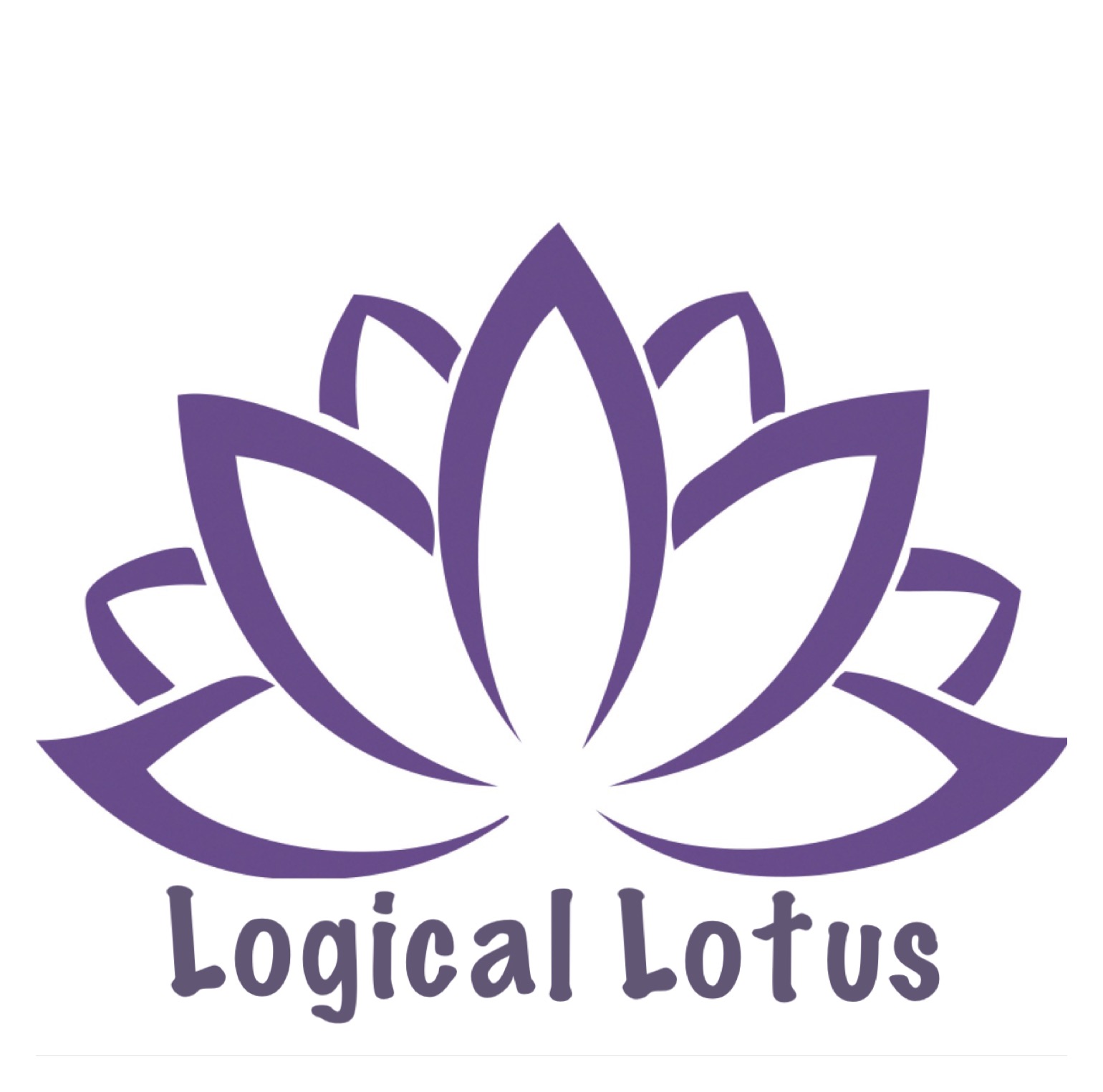In this guide, you’ll find straightforward methods for managing your emotions mindfully; these tools will prove invaluable additions to your self-growth and self-care toolboxes. Moreover, if you apply these methods liberally, you’ll see yourself bloom.
Learning to manage your emotions in healthy ways supports total wellness and sparks growth. You can employ various tools to manage your emotions (or feelings) healthily and productively throughout your day (and life). Mindfulness is but one of them. However, its long-term effects are mindset-altering and life-changing. With focused awareness (or mindfulness), you cultivate a greater understanding of your feelings, thoughts, and yourself.
Over time, your perception of yourself and the world changes. Wayne Dyer “nailed it” when he said, “if you change the way you look at things, the things you look at change.”

Table of Contents
- All About Emotion
- Processing Emotions with Awareness
- Managing Your Emotions Mindfully: A Simple Guide
- How to Face Your Feelings Mindfully
- Scenario Examples
- Get Unstuck: Mindfulness Methods for Moving Through Feelings
- Stop Dwelling on Things Beyond Your Control
- Practical Calming Techniques
- A Word on Challenging Times: Mindfulness Through Difficulties
- Parting Insight
With mindfulness, you create the mental space to delve into (or sit with) your emotions and process them calmly and constructively. This ability proves especially handy when coping with “unpleasant” emotions, as you’re then neither repressing them nor dwelling in them; instead, you approach these emotions with compassionate, discerning awareness (no judging of yourself involved).
All About Emotion
We are destined to learn and grow. Part of how we do that is through emotion. Of course, you’ll find slightly different definitions for emotion, depending on who you ask, but according to Oxford Dictionary, “emotion is a natural instinctive state of mind deriving from one’s circumstances, mood, or relationships with others.” Hence, you are bound to experience a range of emotions throughout life, from sheer joy to intense sadness, because feelings are innate.
Moreover, emotions considerably influence your cognitive processes, including perception, learning, attention, reasoning, memory, and problem-solving (as detailed in this informative scientific article).
What’s Their Major Function?
Our emotions function to guide and protect us, helping us take action to: avoid danger, overcome difficulties, foster growth, and promote contentment. For example, when we experience fear, we may attempt to sidestep perceived threats by taking preventative steps. Or, when we feel inspired, we may take measures to support personal growth endeavors.

Of course, we’d undoubtedly prefer experiencing pleasant emotional states (like joy and inspiration) over “unpleasant” ones (like sadness or guilt); but all emotions serve a purpose.
You’re Meant to Feel All the Feels
You’re meant to “feel all the feels” or experience the full spectrum of emotions. Emotions that feel unpleasant (such as sadness, guilt, fear, anger, and anxiety) are part of the human experience, often propelling change and growth. However, these emotions can negatively impact your state of mind, becoming troublesome (and possibly overwhelming) if you actively avoid them or if you consistently dwell in them. Conversely, when you connect with unpleasant emotions mindfully, you acknowledge and work through them, which uplifts your state of mind (leading to improved mental health (and further growth).

Processing Emotions with Awareness
How we process our emotions plays a big part in how we manage them. Finding acceptance of your feelings helps you healthily handle them. When mindfully processing your emotions, you let yourself feel what you need to feel in the moment. But, you’re also compassionately investigating the thoughts driving your feelings (to grasp why you feel what you feel). But why probe your thoughts?
There’s a Connection Between Thought and Emotion
Your emotions flow from your thoughts, instinctively and sometimes unconsciously. Since your thoughts technically control your mind and emotional states, it’s pivotal to be aware of this inner dialogue when dealing with emotions that challenge you.
Managing Your Emotions Mindfully: A Simple Guide
Mindfulness can be instrumental in managing (or moving through) unpleasant emotions. Sitting with feelings in a peaceful, non-judgmental state of awareness allows you to examine their origin (your thoughts) with serene discernment. You can then take productive actions to move through these emotions, finding resolve, as you do so.
Keep in mind; such acts may include showing forgiveness and compassion to yourself and others. Now that we’ve covered the basics let’s explore ways to manage your emotions mindfully. We’ll begin with methods for facing (and moving through) feelings.
Face Your Feelings with Mindfulness
People sometimes avoid sitting with (or facing) unpleasant emotions due to their nature (this is understandable, especially with uncomfortable emotions, like guilt, regret, remorse, etc.). So instead of confronting and managing these feelings, they seek distraction (i.e., text a friend, watch TV, or jump on social media, for instance), intentionally or unintentionally.

Serial emotional avoidance can be detrimental to your wellbeing and potentially create roadblocks in your growth journey(s), regardless of the whys. But, on the other hand, facing your feelings mindfully may be precisely what’s needed to move forward and keep developing in ways that nourish all of you (mind, body, and spirit).
You can manage difficult emotions by sitting with them and exploring them without judgment. Doing this reveals truths about yourself, your circumstances, and your relationships (past and present). With this knowledge, you’re able to take actions that lead to your highest good.
How to Face Your Feelings Mindfully
Either at a time of your choosing (if possible) or as they arise, you’ll mindfully engage with the feelings in the following manner.
Just Breathe
Begin by taking a few deep breaths and then follow the breath (i.e., focus your awareness on the breath) until you feel tranquil enough to engage with your feelings effectually. You may notice your breathing and heart rate slow. That’s normal.
Just Feel
When ready, with eyes open or closed, let yourself feel anything you’ve been holding back. Sit with your feelings long enough to experience their depth (pay close attention to your emotional state, and pull back to refocus on the breath-if you find yourself becoming unsettled). Otherwise, breathe through these waves of emotion. Stay present as you simply feel, and then shift your attention to the source of your feelings.
Question Yourself to Get to the Root
You’ll directly explore the connection between your inner dialogue and your emotional state when ready and able. You may intuitively know the whys behind your feelings (we often do). If the whys haven’t previously occurred to you (that’s okay), you’ll now ponder the whys behind your emotions in the following manner.

Gently direct your focus to the root of your feelings (the thoughts and memories attached to your emotional state) while inhaling and exhaling normally. Then, maintain awareness as you begin dissecting the dialogue behind your emotions.
Ask yourself some variation of, “Why am I feeling this way?” Allow yourself space and time to unravel each string of thought until you arrive at an answer. When you’ve obtained your answer, and it feels like complete truth, you’re ready to forge ahead. The next round of self-reflective questioning will vary, depending on your found truth.
Enquire Further to Gain Insight & Determine Action
You might continue by asking yourself questions like, “What can I do to feel well again?” and “How can I see things more clearly (as they truly are)?” or, “How can I genuinely heal?” Of course, the above questions are only ideas or examples; your introspective line of questioning depends on the source of your feelings. The goal is to attain concrete understanding through mindful introspection, so you can then pursue a purposeful course of action (or a way to move forward).
Side note: secondary emotions may come up as you seek clarity (both pleasant and unpleasant). Facing our feelings isn’t always comfortable at first. And there may be tears, especially as you dig deeper, but that’s okay. It’s all part of the process. So breathe through these waves of emotion with tender patience as you untangle your thoughts and determine your best course of action.

Take Productive Actions to Move Forward
The key to managing your emotions with mindfulness is follow-through! You must take action (or follow through) once you’ve determined the best course of action for resolution. The steps you take are contingent on your situation and findings, but I’ve included a couple of scenarios below for added guidance.
Scenario Examples
The purpose of the following scenarios is to give you a clearer picture of how the process works (in general). Undoubtedly, your questions and actions will vary depending on your background, situation, and tendencies. Regardless, the central concept is the same; remain mindful (present) when probing your feelings. In this way, there’s less room for misconception or judgment and more space for positive intervention and movement. Okay, here’s our first scenario example; resentment.
Scenario One: Resentment
Resentment is a mix of emotion, including anger (some folks harbor resentfulness yet don’t investigate the whys). The idea here is to move through resentment because, in reality, it benefits no one. But to push through, first, you must confront and question your feelings.

Let’s begin! First, settle yourself by taking a few deep breaths and then follow the breath until you feel calm and clear.
Next, proceed to question yourself to gauge how you might move forward. Begin by asking, “Is my perception clouding reality?” In other words, are you seeing things as they are? You might also ask yourself, “What are the actual intentions of (the person you’re feeling resentful toward)?” or “What can I do to let go of these feelings?” Focus on countering feelings (and thoughts) of resentfulness with ones of empathy and compassion as you inquire.

Once you’ve uncovered your resolution or action, be sure to follow through!
Possible Actions:
- You mentally or physically note all you’re grateful for in your life (gratitude journaling works well). When you look at “the haves,” you’re less concerned with the “have nots.”
- You mentally let go of what you can’t control (after acknowledging it). Free your mind, friends.
- You forgive yourself (and others when possible).
- You replace resentful thoughts with productive thoughts—always doing your best to redirect your thinking if you feel resentment building.
Remember, these are only a few action examples; you’ll know what’s right for you. Let’s move on to the next example scenario. Guilt.
Scenario Two: Guilt
Some folks dismiss feelings of shame as they arise; instead of analyzing them and looking for solutions or ways through them. Why? Working through these unpleasant feelings is damn uncomfortable (at first).
If you’re feeling shame or guilt about something in your past, it’s time to let it go and (choose to) grow. Know this: You are not your actions (past or present). You are responsible for your actions, that’s true, but shouldn’t be defined by them forever. Letting go and moving forward means forgiveness must happen (you deserve it).

When ready, take a few deep breaths and follow the breath until your mind is a cloudless sky (however long that takes).
Next, focus on forgiving your past self; you’ve grown from then, after all. Maybe you didn’t possess the same wisdom as you do now; forward momentum is what matters. “Feel all the feels” as you realize and affirm this truth mentally. And breathe.
You might then ponder questions like, “Am I seeing myself or events clearly?” or “How can I resolve to do better, moving forward?” Remain mindful while inquiring. You might also ask yourself, “How can I find acceptance”? Or “How can I feel better (what actions can be taken)?”
Please remember, as you inquire, to show yourself compassion and an appreciation for how far you’ve come already. You deserve and require your kindness.

Possible Actions:
- You forgive your past self! This has to happen.
- You resolve to change what is in your control to change (further action might be necessary).
- You choose to let go of the rest (things you can’t change or that are beyond your control).
- You take actions to keep moving forward positively with yourself and others (actions taken will vary greatly, as it’s dependent on your situation).
- You counter feelings of guilt with feelings of love and empathy.
If thoughts and feelings of shame or guilt reemerge, repeat the above steps.
What’s the takeaway? With mindfulness, you can confront your feelings by sitting with them and inspecting the source (inner dialogue) to gain insight into yourself. Then, with self-knowledge, you’re able to take diplomatic steps to manage or move through these feelings. Generally, letting go of limiting beliefs and unpleasant feelings is the outcome of steps or actions taken. Please note: the practice of sitting with feelings (when confronting them) isn’t the same as “dwelling” in unpleasant or dismal mental states.
Get Unstuck: Mindfulness Methods for Moving Through Feelings
When folks become stuck in dismal emotional states (like depression, fury, guilt, remorse, or fear, for instance), they may become overwhelmed, which can have an negative emotional domino effect.
Beyond that, dwelling (or unproductively residing) in these emotional states isn’t conducive to your overall wellbeing or growth. Recall that thoughts determine our emotional state, so if your inner dialogue is unproductive or harmful, your emotional state will follow. If you find yourself trapped within gloomy states of mind, you can use mindfulness as a tool to manage your thoughts and emotions productively (and get unstuck). Here are a few ways to do so.
Think Productively with Mindfulness
You must focus your awareness on the source of your feelings (your thoughts) when you desire to change your emotional state (to get unstuck). With focused attention, you replace self-defeating, destructive thoughts with positive, constructive ones. This act changes your emotional state and, gradually, your overall mindset, having a positive domino effect within your life.

Here’s how to mindfully redirect your thoughts to think productively.
First, be sure you’re in a centered state of awareness (and if you’re not, just breathe, following your breath long enough to feel more clear and calm).
Then, replace the negative inner dialogue causing your current emotional state with productive (or positive) internal dialogue.
Here are several scenarios to illustrate how this method works.
Scenario One
You’re feeling anxious and doubtful about tackling a personal goal of yours, and your state of mind suffers, so you turn inward to investigate your thoughts (being mindful while inspecting).
You discover the root of your anxiety is related to a false belief you hold about yourself. For example, it might be something like, “I can’t do this; I don’t have enough experience or training.”
You would then counter this thought with the exact opposite, “I can do this! It’s my passion. I can acquire the experience or training needed.”
The idea is to dismiss the negative thought patterns and replace them with productive and positive thoughts. This habitual, mindful act brings change.
Scenario Two
You notice your emotional state is going downhill quickly after a stressful encounter with a loved one or coworker. You can pause and reflect mindfully to uncover the source of your pain first.
Is it regret? Counter it with thoughts and feelings of resolve. Then, take action.
Is it fear? Counter it with thoughts and feelings of courage and faith. And move forward.
Is it despair? Counter despair with thoughts and feelings of self-love and self-compassion.
The key here is to repeat this process until constructive (positive) thoughts replace their opposite (destructive thoughts) by default, making it easier to control your reactions (thoughts) and manage your emotions.

But, it takes practice to harness the ability to change unproductive or destructive thinking automatically. Know that your endeavors are worth it; have patience with yourself. Ultimately, positive thinking results in positive energy and actions.
Stop Dwelling on Things Beyond Your Control
Are you hanging onto various painful emotions over things (events or occurrences) that are or were beyond your control? Below, you’ll find steps you can take to let go or move through them (supporting healing and growth).
First, when in a clear, present state, you must internally confirm that there’s no benefit to continually experiencing dismal emotional conditions over situations or events beyond your control (and you deserve peace). Then, sit with this affirmation until it’s a fact.

After that, ponder, “What can I do to let go?” Finally, shower yourself with compassion as you search your mind for solutions or actions that feel right.
Possible Actions:
- You choose to let go of what you can’t change to realize the beauty in the present (hence creating a brighter future).
- You resolve to do what you can, to heal, or help you move forward (this will entail additional steps).
- You forgive yourself and others in whatever ways you deem necessary.
Practical Calming Techniques
Mindfulness is known for its ability to bring calmness, thereby reducing stress. Calming methods are a convenient fix if you notice your emotional state interfering with your ability to function in everyday life. Here are a couple of ways to soothe yourself mindfully.
Simple Breathing Exercise
The only focus here is the breath. The purpose is to distract your mind from unpleasant feelings when they overtake you, soothing you in the process.

If possible, begin by closing your eyes. If not, your eyes may remain open.
Next, breathe in for the count of four, then exhale for four seconds as well.
Repeat this step several more times while focusing only on your breathing.
Any time your mind wanders or you feel your emotions escalating, refocus on your breathing. Then, you may end the session when you know your state of mind is balanced again.
Another calming mindfulness technique you can use is present-moment awareness.
Be Here Now: Focus on the Moment
The act of staying present as you perform any task will redirect or distract your mind from worries or troubling thoughts (as your focal point shifts). You can choose to be present or mindful, whether performing tasks at work, home or otherwise. Here’s how.
When carrying out any task, commit all of your focus to that action. Be mindful of the senses (sight, smell, etc.) as you act. In other words, pay close attention to what you’re seeing, feeling, smelling, and so on. Be in the experience, however mundane.
Then, if your mind wanders, bring your focus back to the task at hand. It’s a convenient way to remain present, which brings calm and bypasses stress.

A Word on Challenging Times: Mindfulness Through Difficulties
Life is an unpredictable adventure at times; it’s easier to go with the flow when you can regulate your state of mind. But sometimes, despite our best efforts, during difficult times in our lives or when we experience substantial loss, our emotions may temporarily overtake us (understandably).
However, when ready, we can still sit with our feelings, find our center, letting inner peace and self-knowledge guide us forward.
Parting Insight
Remember, all of the above methods are self-growth tools. You can use mindfulness techniques solo or with other tools. If you need help or guidance outside of yourself, seek it, whether professional therapy or family and friends. It’s whatever works for you. You do you.
Be Proactive
Slow down, be mindful, and routinely monitor your thoughts, emotions, and behaviors (they’re all connected). Pay special attention to your mental state and emotional reactivity. Be self-reflective to work through difficult emotions that lure you into prolonged negative mental states or inhibit growth.

In closing, acknowledge that: learning to manage your emotions in healthy ways is growth in itself (give yourself lots of grace). When working through unpleasant feelings, getting to know yourself is a given (self-knowledge is gold and is the goal). Finally, you should always be kind, patient, and compassionate with yourself during this growth process (it takes time to see yourself as you really are).










1 Comment
Leave your reply.